Whether you’ve seen the movie or not, you’ve probably heard of the Titanic. Since the events of the “unsinkable ship,” historians and researchers have immersed themselves in discovering what exactly happened to the ship as it collided with the iceberg.
Argo
For obvious reasons, few people have had the privilege of seeing what the Titanic looked before and after the wreck. In 1995, first remnants of the ship were discovered south-east of Newfoundland by Robert Ballard, thanks to a deep-sea remote control submersible called Argo.
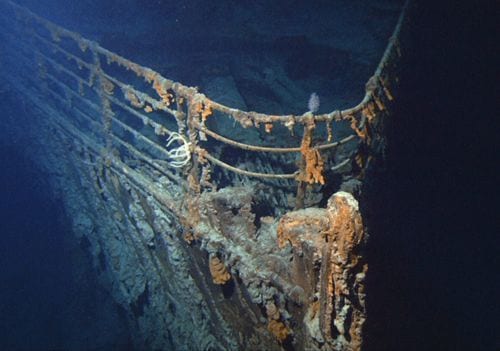
A Propeller Discovered
Within the wreckage, Robert’s team discovered one of the three propellers, which was uncovered on the starboard side of the ship. Titanic’s side propellers reached 23 feet wide, while the middle’s width measured at 16 feet. The left image was taken towards the end of the Titanic’s construction and gives a clear idea of how massive both the ship and its propellers were. Had the ship been faced upright, the Titanic would have been taller than any building that existed during that period.
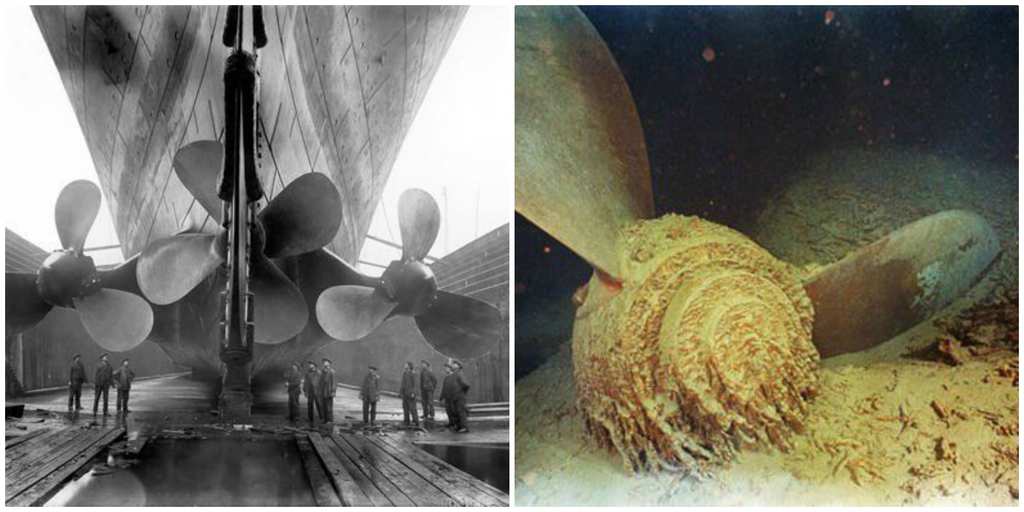
First Class Dining
On Deck D, you could find the Dining Saloon, which was enormous. It was the largest room on the ship and its width measured at 114 feet long and it could accommodate 500 passengers. Its interior included finely paneled walls and an elegant ornamented ceiling. The walls were painted in white and spectacular leaded-glass windows covered the portholes, giving the room the appearance of a lovely land-based restaurant. At evening, special lighting behind the windows would enhance this illusion and create a warm and romantic atmosphere.
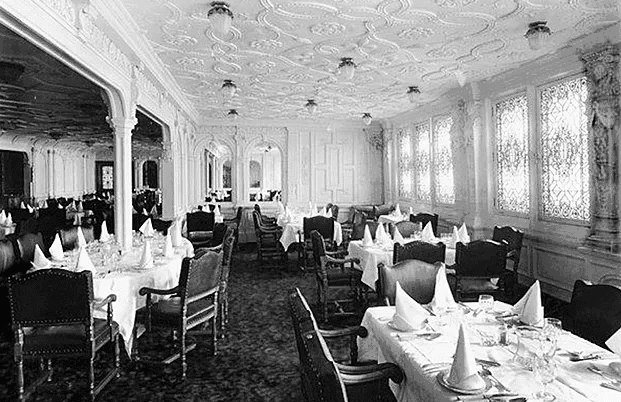
First Class Smokeroom
Towards the back of the Promenade Deck was this lavish smoking room. Its walls were paneled in Georgian style mahogany and inlaid with mother of pearl. Above the fireplace was a centerpiece painting by Norman Wilkinson called “The Approach to the New World.” This getaway was designated only to men and offered several areas where friends could enjoy an intimate conversation, cigarette, and a drink. Within the space were tables and chairs, an excellent spot for a friendly game of cards.

Second Class Accomodations
Seven decks of the Titanic were designated to second class passengers. The second class accommodations and facilities on board the Titanic were equivalent in comfort and space to many first class facilities on other ships of the time. Public areas accessible for the middle class included a vast library, smoking room, dining saloons, and Promenade Decks. The rooms offered comfortable dwelling and were trimmed tastefully with oak paneling, carpeted floors, and mahogany pieces of furniture such as a large sofa, wardrobe, dressing table with washbasin, mirror, and storage shelves.
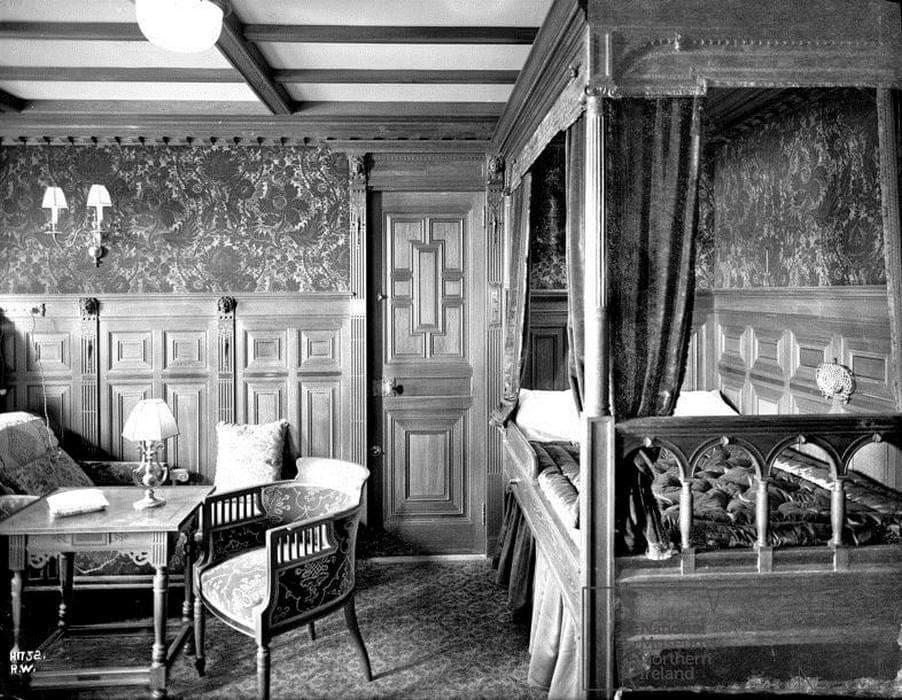
The Grand Staricase
The interior design of the Titanic took on several different styles from Empire to Renaissance to Louis XV. The object of this deluxe design was to overwhelm the passengers and make them feel like they were aboard a floating hotel. The grand staircase was one of the most famous parts of the ship and a true work of art. The stairs were an English oak masterpiece, designed in the neoclassical William and Mary style while its wrought iron balustrades embodied an impressive Louis XIV style.
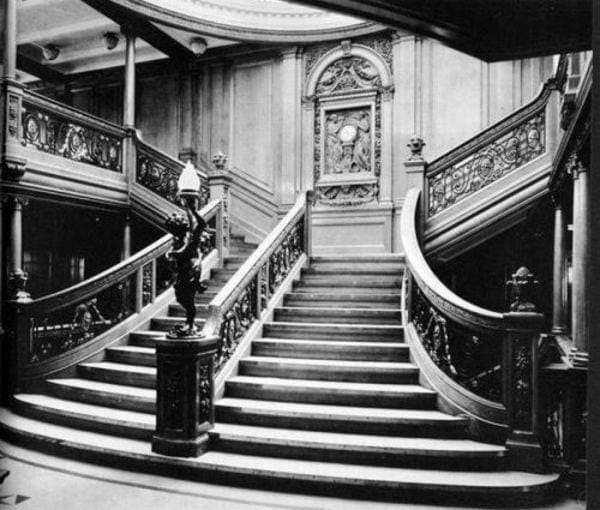
Promenade Decks
Second class passengers were offered a selection of three outdoor Promenade decks to stroll on as they voyaged the sea of the Atlantic. The biggest deck was a 145-foot long open stretch at the aft-end of the Boat Deck, which enclosed the raised roof of the first class smoking room. A small deckhouse was also installed, which acted as the second class entrance, from where the elevator and main staircase could be accessed. Along the deck sat wrought iron benches and teak deck chairs which were available for rent for the sum of three shillings.
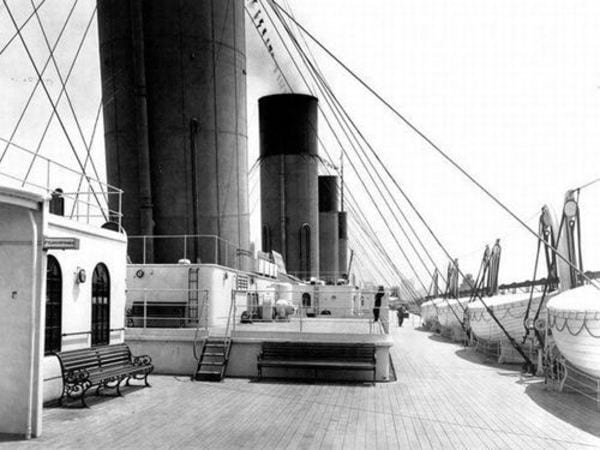
First Class Gym
Among the many wonderful things Titanic offered its first class passengers was a state-of-the-art gym, which held an electric camel, electric horse, several cycling machines, and a rowing contraption. Tickets, priced at one shilling, entitled first class passengers to one session in the facility. The gym had separate hours for both men and women, allowing the ladies to exercise between the hours 9am to noon and the gentlemen between 2-6pm. Children were also able to access the gym between 1-3pm.

Male Survivors
A group of male Titanic survivors sits here, at the Millbay docks in Plymouth, England, upon their return home in May 1912. The youngest child among the male first class passengers to survive was named Master Hudson Trevor Allison, only 11 months and eight days old when the ship went down under. The youngest boy from the second class to live through the disaster was seven months and 17 days when the ship sunk, while the youngest third class survivor was 5-month-old, Master As’as Tannus.
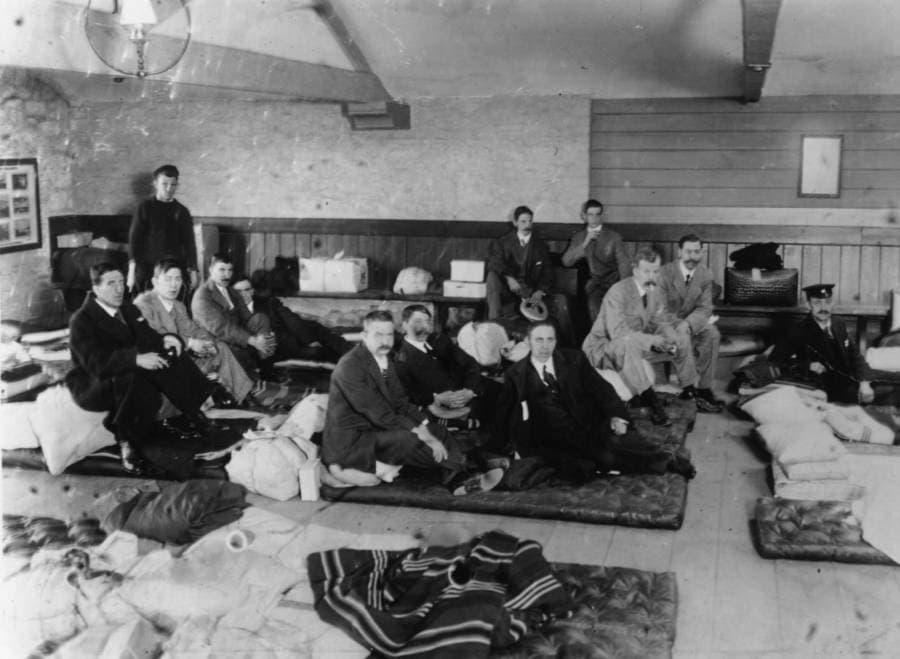
Not Enough Lifeboats
While the ship contained 2,208 passengers, there were only enough lifeboats to hold 1,178 people. One of the ship’s legacies was that she had too few lifeboats to evacuate all those on board. Eighteen lifeboats were used, loading between 11:45 pm- 2:15 am. Many of them carried only half of their maximum capacity and there are many different stories explaining this. Some say they were afraid the boats would buckle under the weight, while others suggested it was because the crew was following maritime tradition to evacuate women and children first.

A Cosmetic Disaster
In this rare photograph, the lifeboats that saved Titanic passengers hang off the sides of the Carpathia (the ship that made the rescue). This black and white shot was taken just as the vessel made its way into the New York pier. Chief designer of the ship, Alexander Carlisle, originally planned for the Titanic to have 48 lifeboats on board, but the number was later reduced for cosmetic purposes. Other opinions claimed this number would cause the ship’s deck to look cluttered and unpleasing to the eye.
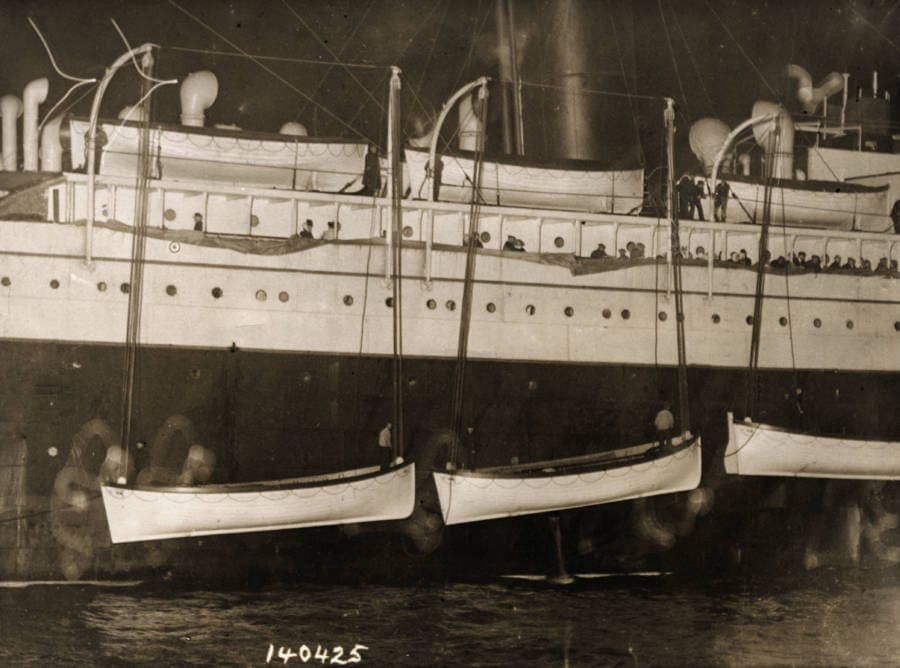
Titanic’s Orphan Brothers
The famous Titanic orphan brothers, Michel (left, age 4) and Edmond (right, age 2) temporarily became parentless when their father sunk into the cold waters of the Atlantic, along with 1,500 other passengers. Luckily, the boys survived and eventually made it to New York, where they stayed for a month before their mother, (who stayed in France and didn’t board the ship) finally recognized them in a newspaper and came to collect them. This photo was taken before they were identified in April 1912.

Child Survivors
The Navratil brothers, one ironically seated next to a toy boat, resembling the Titanic, were lucky enough to make it onto one of the ship’s few rescue boats before it sank. It’s remarkable for an adult to have survived such a terrifying event and it’s even more amazing that young children managed to live through the horrors of the event. It’s nearly impossible to comprehend the fear young passengers experienced as they watched the ship slip away, let alone the post-traumas that developed following the event.

The Reading And Writing Room
The reading and writing room on board was mainly designed for the traveling first class women of the Titanic. The walls were painted in a creamy white color and furnished elegantly. On one side of the room, there was a huge bow window that allowed occupiers to look out towards the Promenade Deck. At the center of the room stood a fancy fireplace, which burned brightly, gave warmth to the room, and kept passengers comfortable and cozy.
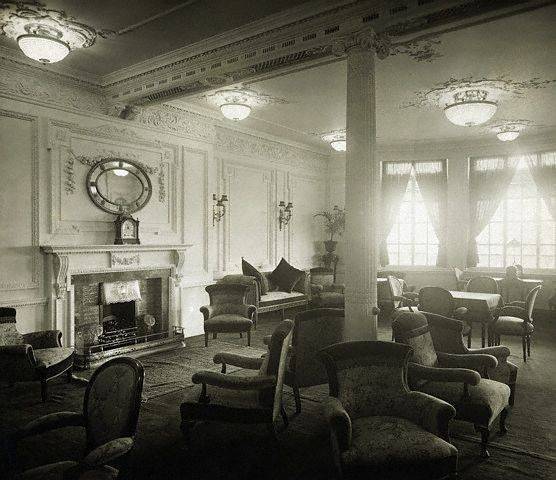
Conflicting News
Here, a newspaper boy sells copies of the Evening News, telling of the Titanic sinking outside the office of the White Star Line (the company that launched the Titanic). This snap was taken on April 16, 1912, just a day after the ship went down. Once Titanic hit the iceberg, she started sending out signals of distress and luckily, several liners were near enough to catch and respond to the call. Conflicting news and optimism regarding the number of survivors began to spread shortly after the incident until White Star officials finally announced the official number of deaths.

Cafe Parisien
Cafe Parisien was a very popular and delicious eating area on the Titanic, which closely resembled the quaint boutique cafes of modern Paris. First class passengers could also indulge themselves in additional restaurants such as the Verandah Cafe and the Palm Courts. The big windows, light-weight wicker furniture, trelliswork, potted plants, and checkered floors in these areas suggested being in the English countryside. First class children favored the Verandah Cafe and often headed over there to play with each other.

The Notorious Iceberg
Once the Titanic hit the iceberg, it took approximately two hours and 40 minutes for the ship to sink entirely below the ocean’s surface. The tragic incident took place four days into the ship’s maiden voyage from Southampton to New York City and there were an estimated 2,224 people on board. The sinking resulted in the deaths of more than 1,500 people, which made it the deadliest peacetime maritime disaster in history. Researchers claim it took 15 minutes for the Titanic’s wreckage to settle to the ocean floor, and what’s currently left of the Titanic sits under 12,500 feet of water.
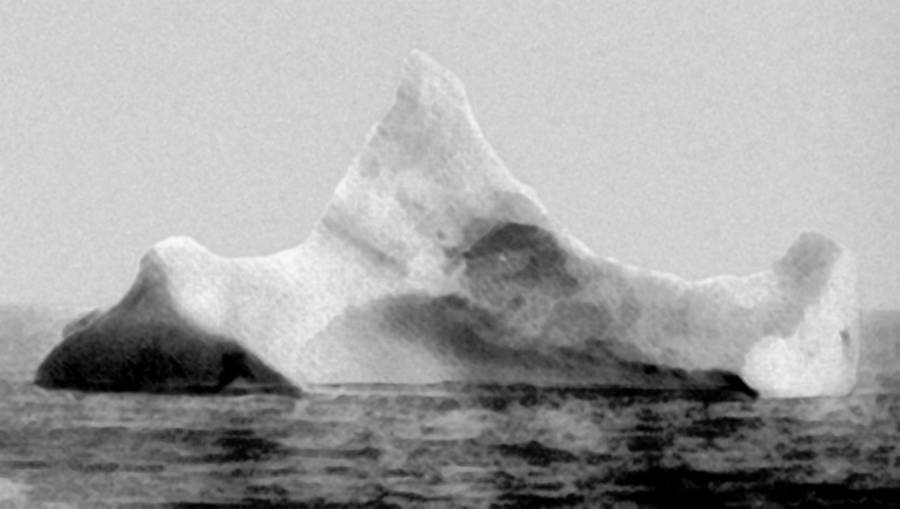
The Docks of Southampton
In this photo stands a crowd of people lining the docks of Southampton, England as the Titanic prepares to take off on its voyage on April 10th, 1912. Accommodation for a first class parlor cost $100,000, while a berth in the first class cabin cost $3,500. If you wanted a bed in the second class cabin, you’d have to pay $1,375, and if in the third class cabin, $350-$900. Family members and friends waved goodbye to their loved ones here, not knowing that for many, this would be the last time.
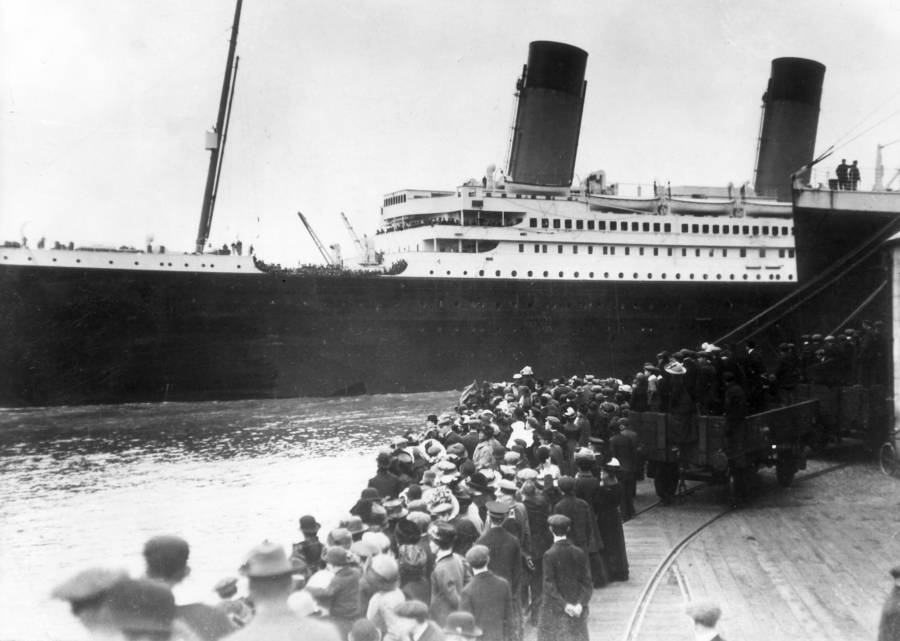
Ship Entertainment
Three days before the ship lost its buoyancy, this little boy was spotted playing on the saloon deck of the Titanic. The monstrous ship offered a number of interesting activities for both adults and children, including a lavish first-class Turkish bath, where gentlemen could enjoy steam rooms, private toilets, and a shampooing room. There was also a big squash court with balls and rackets, which cost two shillings per playing session. Alongside this was a spacious swimming pool, located on the Middle Deck, designated only to first class passengers.

The Titanic’s Captain
To your right stands the notorious Titanic captain, Edward J. Smith. Before embarking on the excursion of the unsinkable ship, Smith served as a British Merchant Navy officer and this was supposed to be his last voyage before retiring. The circumstances of his death have been a dispute for years and several stories emerged regarding how his life ended. Some claimed that he shot himself on the bridge before the Titanic slipped into the dark waters of the North Atlantic, while others claimed to witness him drowning after saving a drowning child.
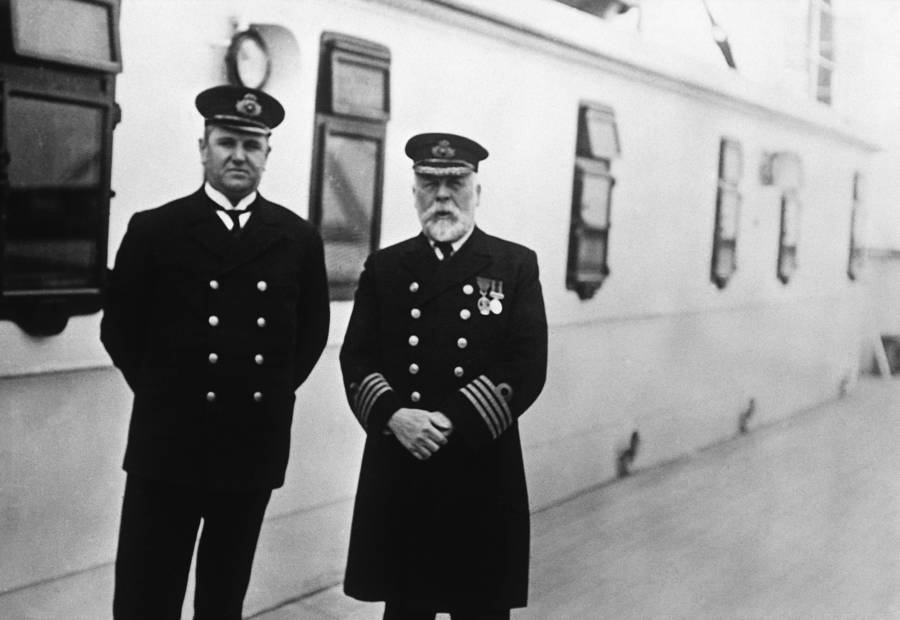
A Wintery Day
Passengers stroll here on the spacious Main Deck of the Titanic, alongside the ship’s onboard lifeboats. When the Titanic left Southampton on April 10th, the weather was mild (50℉-60℉), however, the morning of April 14th, a cold front swooped in and temperatures lowered drastically. This eerie photograph was taken the day prior to the ship’s sinking and you can see passengers wearing heavy winter coats in accordance with the weather. They would have never guessed that these emergency boats they paid no attention to would soon be their saving grace (for only some, that is).
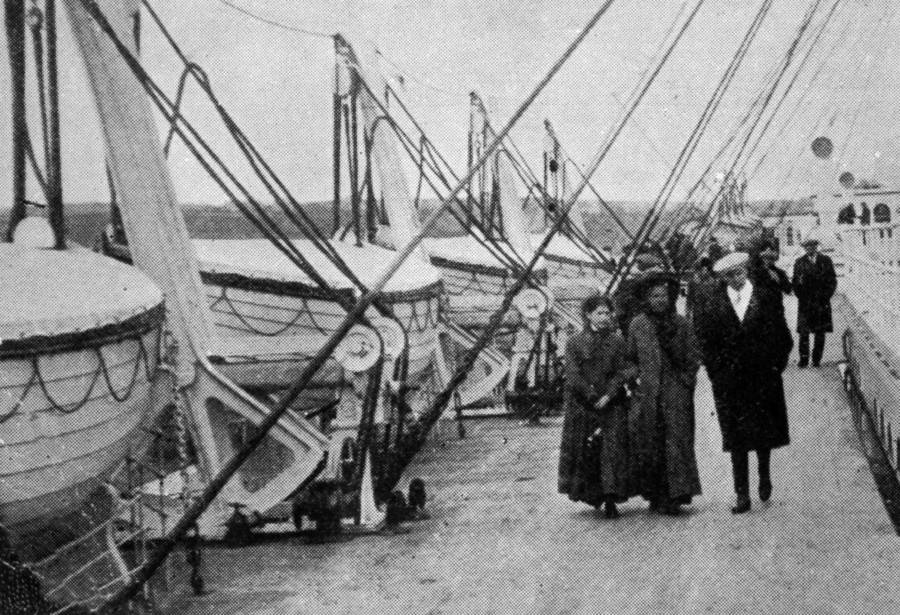
Crowds Await Survivors
Unsure whether their loved ones survived, crowds gathered on the New York docks to await survivors. The Titanic era was famous for its social class segregation, and the ship designated areas on board for each group. The first class included businessmen, politicians, military personnel, industrialists, and bankers. Second class passengers were mostly authors, professors, and clergymen, while the third class was mainly immigrants. Once the Titanic sunk, it became clear that social classes played no role in survival and that money could not save anyone from drowning in the freezing waters of the Atlantic.
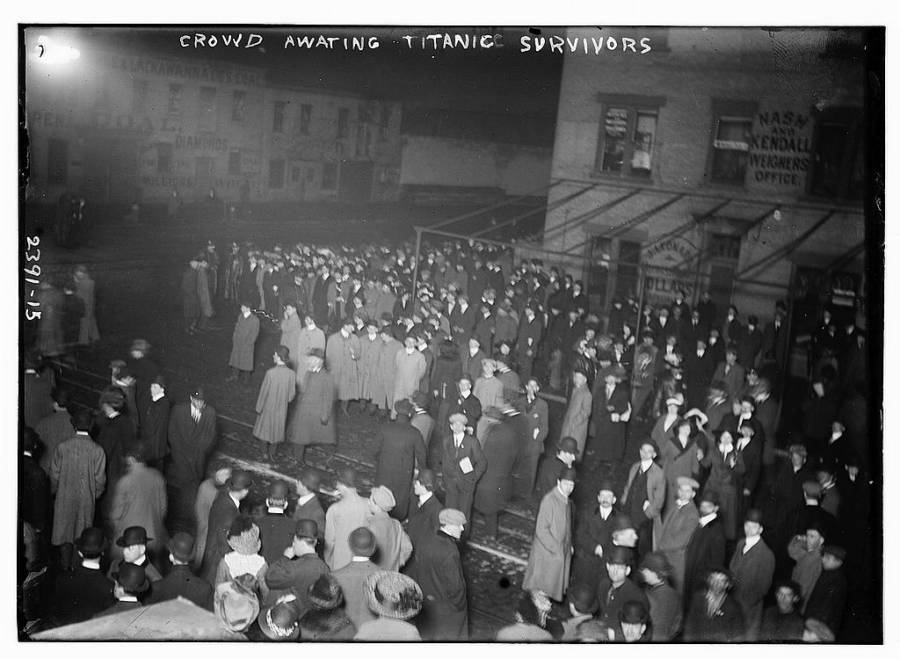
Carpathia To The Rescue
Survivors of the Titanic sit here on the deck of the Carpathia, wrapped in blankets and overwhelmed with trauma. Clothes were given to them by passengers soon after their rescue on April 15th, 1912. The Carpathia endured dangerous ice fields and diverted all steam power to her engines in order to rescue passengers of the Titanic. She arrived two hours after the Titanic officially sunk and rescued 705 people from the lifeboats. Carpathia herself sunk on July 17, 1918, after being torpedoed by a German submarine, which ended with a loss of five crew members.

The Brave Crew
The Titanic hosted an estimated 885 crew members. You might recognize the white-bearded man sitting in the middle of the front as Captain Edward J. Smith. On the bottom row, all the way to the left sat Chief Officer Henry Wilde, who was originally in charge of the Olympic ship but was transferred to the Titanic for her maiden voyage. Wilde was off duty when the Titanic hit the iceberg, however, he took control of the lifeboats and was last seen trying to free the collapsible lifeboats. His body was never found.
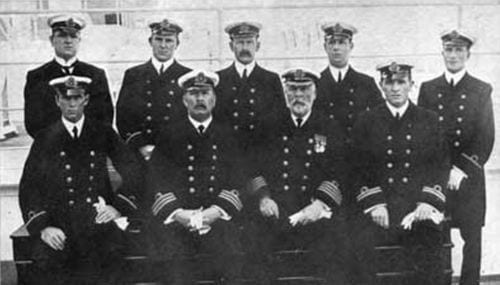
The Inspectors
Considering the amount of energy and resources it took to construct the Titanic, along with the thousands of lives that relied on this piece of engineering, you can only imagine the pressure on the people in charge of inspecting the ship to make sure it was good to go. The two men strolling below were once known as Bruce Ismay and William Price and played an important part in the Titanic inspection team. They were subject to very harsh criticism after the tragedy.

The Poor Bellboys
The bellboys’ job was to haul heavy luggage and do custodial tasks for first cabin passengers. Sadly, every one of these young men perished in the disaster. James Humphries, a quartermaster, who commanded lifeboat No. 11, shared the story on how these fifty lads lost their lives. Shortly after colliding with the iceberg, the boys were called into the main cabin entry and told to stay there until further notice. Once upper management realized the ship was sinking, they ordered every man to save himself. The boys, sadly, never made it to the rescue boats.
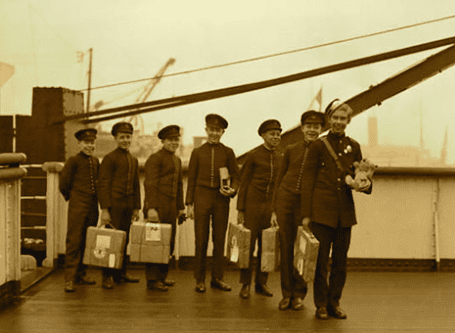
The White Star Line Office
This was taken in New York City outside the White Star Line office. People gathered around this spot between April 15-18, 1912, to hear the latest news on the disaster. The White Star Line was founded in 1850 to take advantage of an increase in trade following the discovery of hold in Australia. Founded from the remains of a defunct packet company, it gradually turned into the most prominent shipping line in the world, providing passenger and cargo services between Britain and the United States.
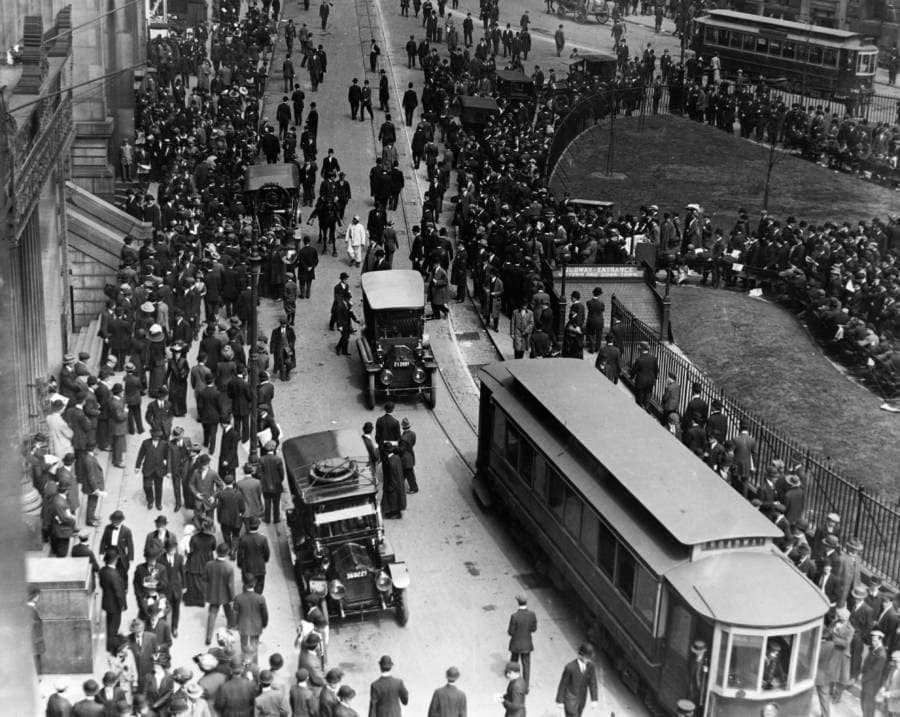
The Great Gantry
Built alongside her massive sister ship, The Titanic and Olympic were to be the largest pair of ships to ever exist and there were no slipways at the time which could accommodate their hefty construction. In order to get things moving, contractors built their own slipway, which they called The Great Gantry. The giant slipway cost $150,000 and took over 15,000 workers to complete. Throughout its construction, eight employees lost their lives, however, that was only the beginning of the calamities to come…
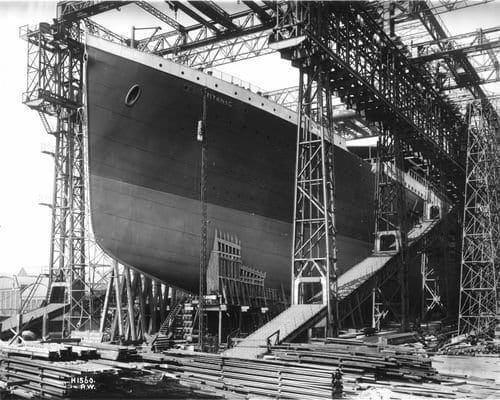
A Costly Ship
The infamous Titanic cost about $7,500,000 (currently, equivalent to one hundred million dollars) to build and was not only the largest ship in the world, but also the most expensive. Twenty horses were needed just to transport the ship’s anchor to the harbor. It was the largest moveable man-made object of its day, stretching 882 feet long and 175 feet high. There were 840 staterooms in all, 416 in first class, 162 in second class, and 262 in third class. The vessel weighed 900 tons and its top speed measured at 23 knots.
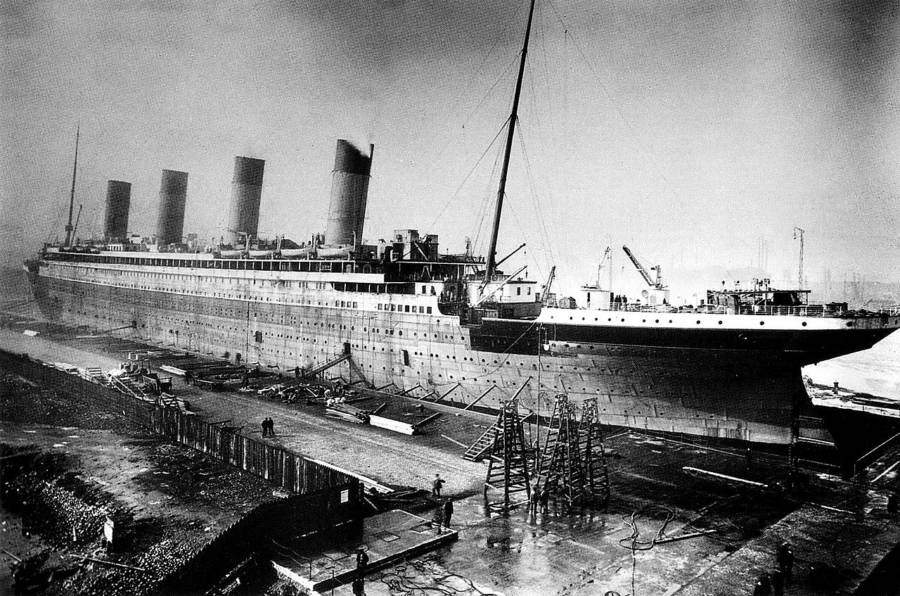
The Honeymooners
The Titanic was known for carrying a variety of different types of passengers, which included these two lovely newlyweds, Mr. and Mrs. George A. Harder. The couple was on their way to their honeymoon when the ship descended to the bottom of the ocean floor. Mrs. George survived the wreck, but her husband, unfortunately, was added to the list of deceased. Photographer Bernie Palmer sold rights to this rare photograph for only $10 but regretted it in years to come when its value skyrocketed.
